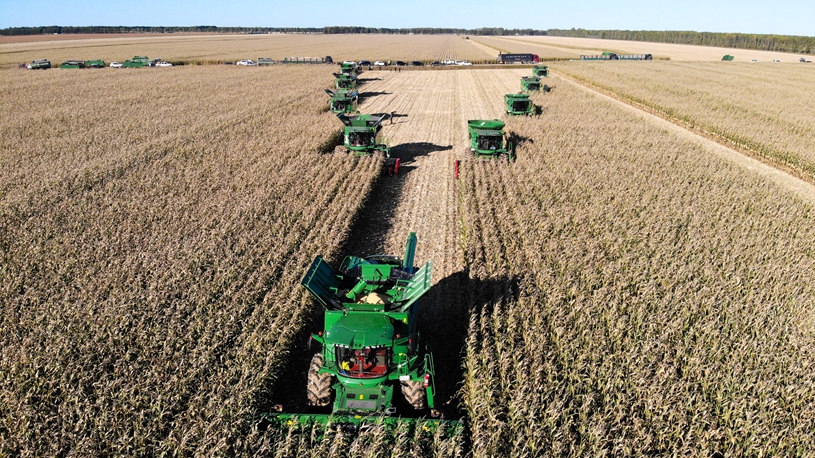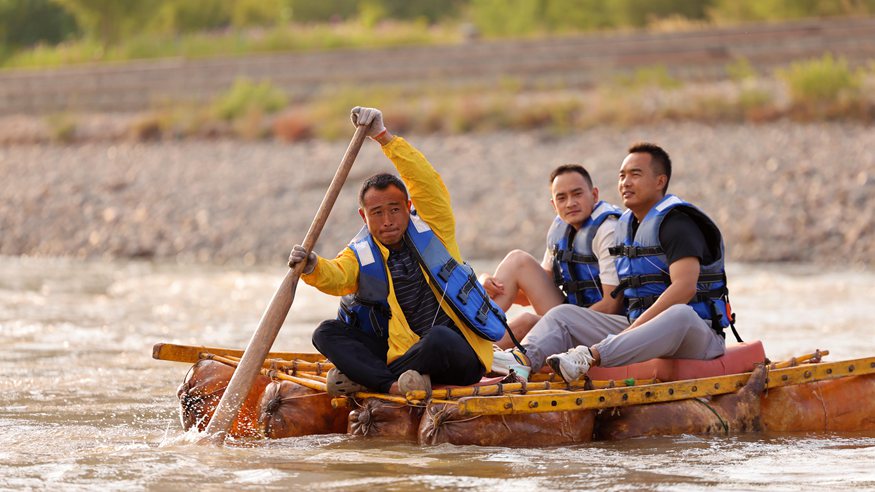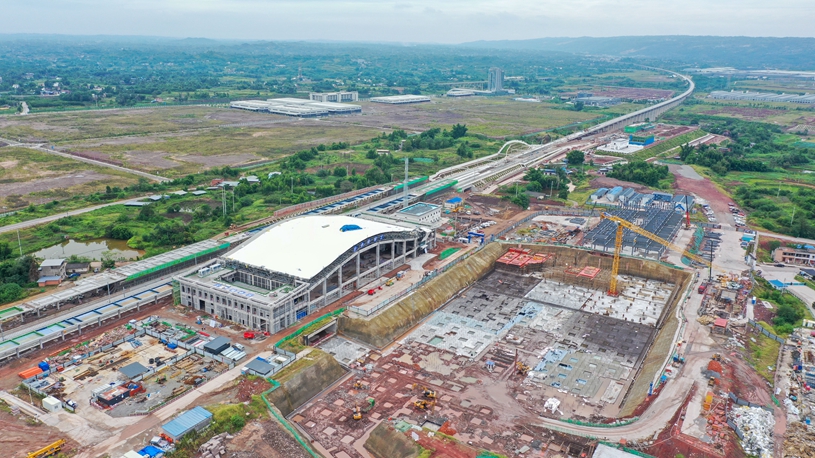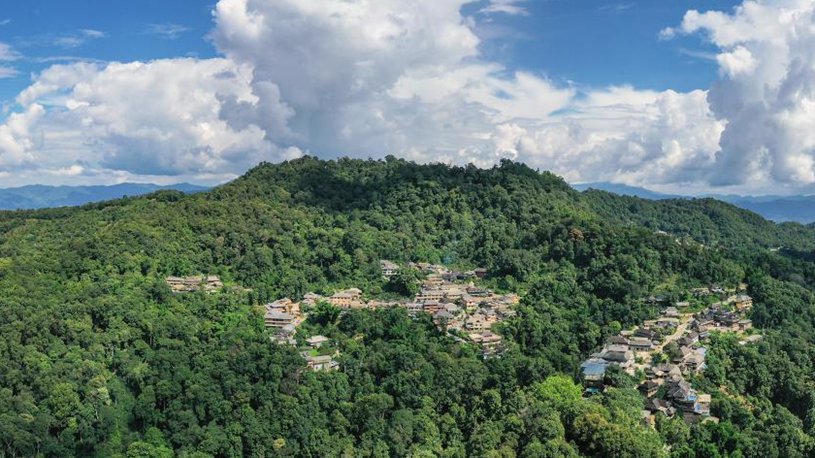* Nestled on the northern edge of the formidable Taklimakan Desert, Kekeya was once notorious for its tumultuous weather and ceaseless sandstorms.
* About 80,000 hectares of forests were planted from 1986 to 2020 in Kekeya as part of an ambitious afforestation project.
* The remarkable achievements in desertification control have also created greater environmental awareness and engagement among the public.
URUMQI, Sept. 25 (Xinhua) -- Imam Memet, 78, has played an important role in the fight against desertification in and around Kekeya, an obscure place in Aksu Prefecture, located in northwest China's Xinjiang Uygur Autonomous Region.
"I am so happy that the trees here are thriving, and will undoubtedly benefit our descendants," said Imam Memet, as he strolled through the lush woods that he has painstakingly nurtured over the span of several decades.
Nestled on the northern edge of the formidable Taklimakan Desert, Kekeya was once notorious for its tumultuous weather and ceaseless sandstorms. Covering a staggering expanse of 337,000 square kilometers, an area slightly smaller than Germany, Taklimakan is China's largest desert and is infamously known as the "Sea of Death".
In an effort to combat desertification and alleviate the adverse effects of shifting sands and dust storms on nearby residents, an ambitious afforestation project was launched in Kekeya in 1986. Consequently, what is now known as the "Green Great Wall" has gradually emerged.
The relentless desertification control efforts in Kekeya have paid off, generating economic and ecological benefits for the entire prefecture. These remarkable achievements have also created greater environmental awareness and engagement among the public.
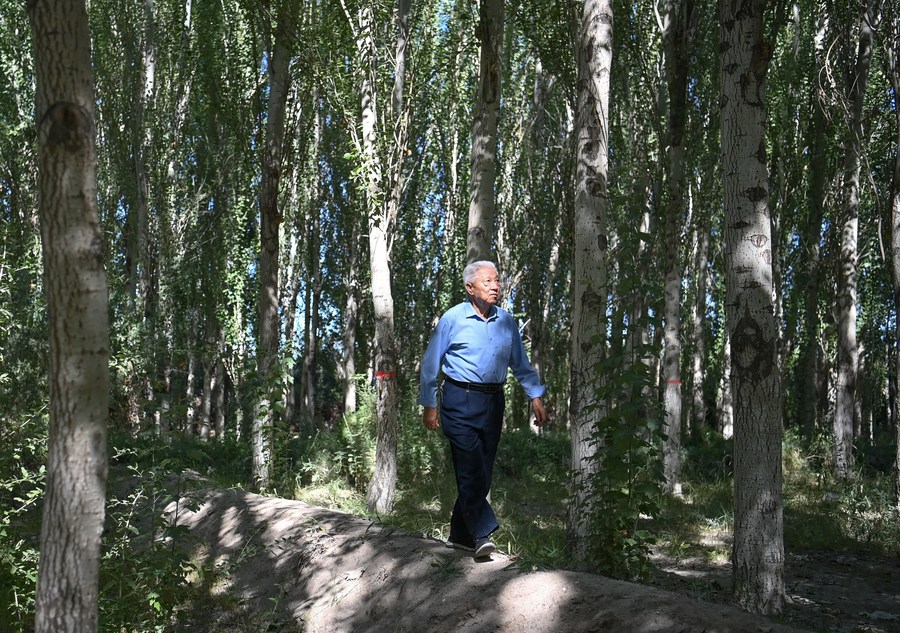
Imam Memet, the first head of the Kekeya forestry station, strolls through the lush woods that he has nurtured over the span of several decades in Aksu Prefecture, northwest China's Xinjiang Uygur Autonomous Region, Aug. 30, 2023. (Xinhua/Li Xiang)
FROM DESERT TO OASIS
Over 40 years ago, the onset of spring often brought with it sandstorms, recalls 89-year-old Xie Fuping, a former Party chief of Aksu. "People endured harsh living conditions, with sand often finding its way into their rice bowls."
Despite their ancestors' attempts to address the issue, the outcomes were far from satisfactory. Historical records show that during the Qing Dynasty (1644-1911), wells were dug in the vicinity of Kekeya to irrigate trees, but the costs were exorbitant, and the wells eventually fell into disrepair.
Before the founding of the People's Republic of China in 1949, local residents made sporadic efforts to plant trees, but few survived. During the 1960s, a project aimed at channeling water from a river in the city of Aksu was also forsaken.

This combo photo shows a bulldozer leveling the ground in Kekeya in 1986 (above, file photo), and an aerial view of Kekeya (below, photo taken by Xinhua photographer Li Xiang on Sept. 1, 2023) of Aksu Prefecture, northwest China's Xinjiang Uygur Autonomous Region. (Xinhua/Li Xiang)
In 1985, Xie consulted with officials of forestry, water resources, transportation and other departments, and they reached a consensus that tree planting should be the top priority for survival.
"Kekeya was a major source of sand and dust storms, which had the most direct impact on the lives of the people," said Xie. Consequently, officials in Aksu resolved to establish windbreaks in Kekeya.
"To seize the initiative of preventing and controlling desertification, planting trees in Kekeya was of paramount importance," Xie said.
In 1986, a team of over 250 people completed the task of constructing a 16.8-kilometer anti-seepage ditch in Kekeya in a mere four months to ensure a steady water supply for irrigation.
Lacking wages and access to large-scale machinery, a diverse group of officials, experts and local residents in Aksu voluntarily gathered tools and food supplies to work in Kekeya. They toiled to soften the hardened soil, level the ground, and adjust soil alkalinity to create a suitable environment for the growth of trees.
"I was determined to ensure the survival of these trees at all costs," said Imam Memet, who was the first head of the Kekeya forestry station established in 1986.
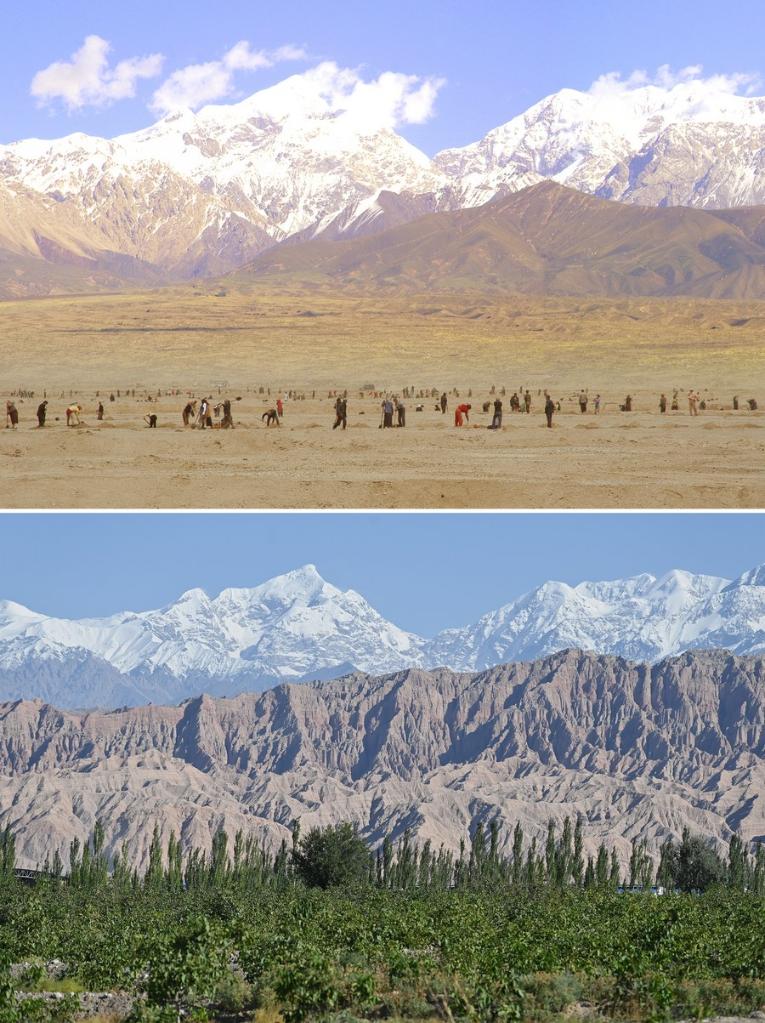
This combo photo shows volunteers and forest rangers planting trees in Kekeya in 2006 (above, file photo), and a view of forests in Kekeya (below, photo taken by Xinhua photographer Li Xiang on Aug. 30, 2023) of Aksu Prefecture, northwest China's Xinjiang Uygur Autonomous Region. (Xinhua/Li Xiang)
Imam Memet and his colleagues lived on the site, with construction blueprints, flashlights and naan bread constituting their daily essentials. They traversed 20 to 30 kilometers each day, diligently tending to the trees by watering, fertilizing and managing them.
His son, Esqer Imam, recalls that during that period, Imam Memet rarely returned home, and when he did, his face was invariably covered in dirt and his beard unkempt. "Once, when my father returned home, our guard dog failed to recognize him and began barking."
Thanks to the unwavering efforts of these volunteers and forest rangers, about 80,000 hectares of forests were planted from 1986 to 2020 as part of the project. The dusty days in Aksu City, the major city near Kekeya, decreased sharply from about 100 days in 1980 to around 30 days in 2022.
"I would feel a sense of guilt if I failed to take care of those trees that people had worked so hard to plant," Imam Memet said.

This series of satellite remote sensing images (from L to R) shows the vegetated areas in 1986,1996, 2006, 2012 and 2022, respectively, in Kekeya, Aksu Prefecture, northwest China's Xinjiang Uygur Autonomous Region. (Xinhua)
THE MIRACLE CONTINUES
"People have transformed Kekeya into a green haven, and we can also harvest 'gold' in Kekeya," said Fu Yiwen, adding that in 2007, his family secured a 0.13-hectare lease to cultivate saline and alkaline land in Kekeya for apple cultivation.
Benefitting from the pre-established irrigation system for windbreaks, Fu's family could effectively irrigate their apple orchards. They also shouldered the responsibility of maintaining the adjacent windbreaks.
"While fertilizing the soil is a challenging and demanding task, Kekeya's success has instilled in us the confidence to cultivate cash crops," said Fu, noting that at present, his family has acquired an additional 2 hectares of land for tourism.
Fu's success exemplifies the government's strategy of mobilizing more people to participate in the preservation of these hard-earned forests while simultaneously stabilizing the income of the locals through the cultivation of cash crops, including apple, walnut and jujube trees.
The sweet and juicy Aksu apple has now become a signature agricultural product of Xinjiang.
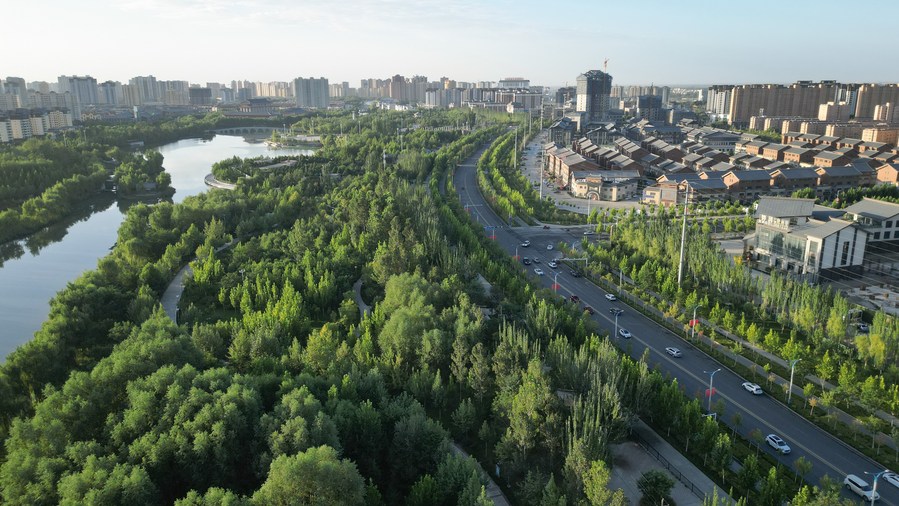
This aerial photo taken on Aug. 31, 2023 shows a view of urban area in Aksu Prefecture, northwest China's Xinjiang Uygur Autonomous Region. (Xinhua/Li Xiang)
Today, more than 86 percent of the trees in Kekeya's afforestation project yield economic benefits. In Aksu Prefecture, the total area devoted to fruit crops reached 300,000 hectares in 2022, with the average income of farmers from fruit cultivation surpassing 5,500 yuan (about 767 U.S. dollars), constituting 26.25 percent of their annual earnings.
In the Longtan lake park of Aksu City, Wu Weifan was busily slicing cucumbers, while his wife Ye Jing was sipping tea on a hammock. They drove there from south China's Guangdong Province in their recreational vehicle (RV) for a tourism getaway.
Just four decades ago, raging winds and sandstorms could render the streets of Aksu invisible during spring days, leading to the suspension of classes for students. During summer and autumn, frequent floods would engulf homes, and devastating wind disasters would uproot ripe fruit from orchards, posing threats to lives and property, recounted Song Xingnian, head of the Kekeya memorial hall.
Today these are things of the past. "The air quality here is good, the scenery is beautiful, and the people are hospitable," said Ye, adding that the RV campground provides free water and electricity. "Life in the campground is convenient, offering visitors a homey atmosphere."
The lake park has gained popularity through the internet, attracting RV travelers from provinces such as Liaoning, Hubei and Shaanxi to its campground.
Having amassed valuable experience from the Kekeya afforestation project, Aksu Prefecture has embarked on more ecological restoration and desertification control initiatives within its region since 2015.
Lu Qi, the chief scientist at the Chinese Academy of Forestry, said that China's desertification control efforts have transformed from a scenario where "sand forced humans to retreat" to one where "trees compelled sand to recede" over the span of decades.
Lu added that diverse approaches tailored to specific regions and conditions have been explored, and practice has proved that Kekeya's method has been effective.
(Video reporters: Zhao Chenjie, Su Chuanyi, Liu Hongxia, Li Xiang, Pan Ying, Zhao Shijie; video editors: Zheng Xin, Hui Peipei, Zhou Sa'ang) ■


